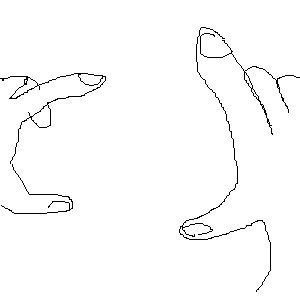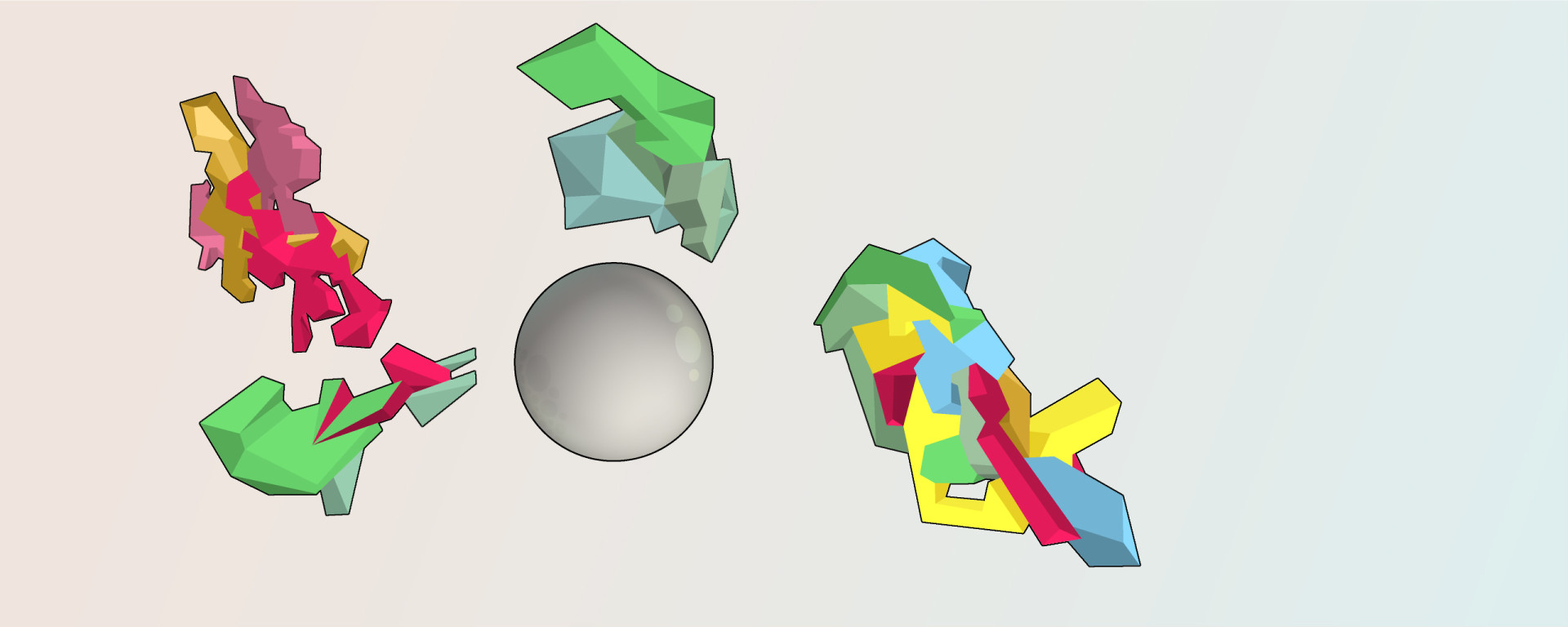Patently Absurd
Sometimes I have patent-worthy ideas. Here is some art priori for posteriority:
Animation Interface


Keyframing an animation generally involves recording (i.e., drawing) an image at discrete time coordinates, and filling in the ‘between’ frames later.
However, this Animation Interface would swap time with space, and record discrete points continuously over time.
It would work by using motion tracking gloves & a head tracking system, coupled with a computer. Using the gloves, the fingertips would act as points in spacetime, recorded in relation to the head/eyes (which would act as coordinates for the camera). This would allow the user to ‘act out’ a motion with their hands/fingers, in front of their own eyes. This would allow for ‘intuitive’ motion to be recorded in realtime. It would allow keypoints (rather than keyframes) to be recorded.
In the example sketches above, the fingertips are mapped onto the wingtips of 2 dogfighting planes.
I’ve been practicing this fingertip keypoint method of animating since 1987, if not earlier. They called it my ‘exercises’.
—
Photoshop for Sound
This is a hypothetical mapping of the Photoshop interface onto audio manipulation functions.
It would be interesting to use Photoshop interface/metaphors to edit sound, rather than having to learn a completely different interface when you could easily create isomorphisms between visual & audio editing.
In theory, you could also map visual functions onto an audio interface (this is already partially done in Photoshop, e.g. waveforms are similar to levels/histograms). Since I’m more familiar with Photoshop, though, I’ll list some Photoshop tools/commands that would be mapped onto audio functions:
- Lasso or Marquee –> select segments of sound
- Clone Stamp –> duplicate audio segment
- Layers palette –> audio channels
- Brightness/Contrast/Levels/Curves –> volume, distortion/compression
- Gradient tool –> fade in/out
In addition to these specifics, more obvious interface remappings would be used, such as ‘blurring’ sound, or using traditional bezier curve handles to ‘resize’ or ‘distort’ an audio sample.
—
Tune in next time, when I’ll try to document my method of FTL communication!
